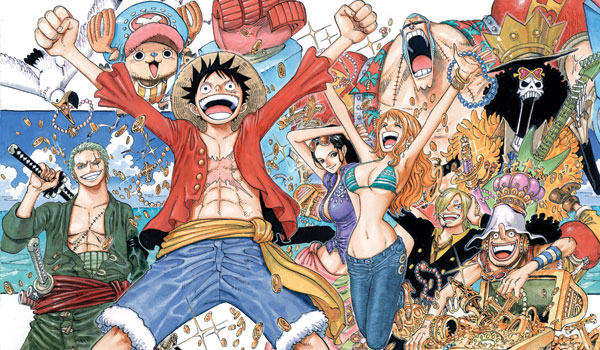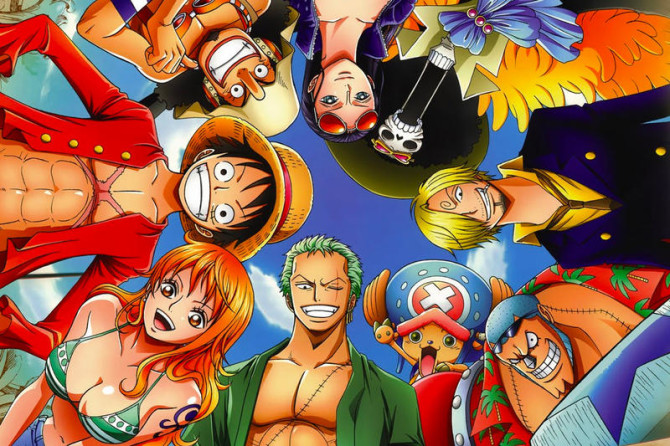Genre: Japanese Manga – TV Pilot (One Hour)
Premise: Based on the manga comic, numerous pirates sail the seas in search of the famed treasure known simply as “One Piece.”
About: I’m told One Piece is the most successful selling manga comic in Japanese history. And since only Disney and Sony have superheroes, everyone else needs to find their fantastical subject matter from elsewhere. It was only a matter of time, then, that someone, in this case, Netflix, would take a big-budget chance on a manga comic. And if you’re going to go for it, you have to go big. So of course they have to adapt the best manga of all time.
Writer: Matt Owens (based on One Piece by Eiichiro Oda)
Details: 57 pages
So far, I am yet to understand any Japanese adaptation of anything I’ve ever read or seen that is not horror. The Cowboy Bebop script was indecipherable from a phone book written with sluglines. When the Wachowskis adapted Speed Racer, I stared at the screen in bafflement for 30 minutes before dropping a five ton brick on my remote control power button to make sure I would never risk seeing the film again. For a while, I tried to get into famous Japanese novelist, Haruki Hurakami. I reluctantly traversed past the 200 page mark in a couple of his novels before I realized that there was no point to either of them (I dare anyone to make an argument that IQ84 makes sense). Most recently, I made the mistake of watching the movie, “Your Name,” and found it the most hackneyed simplistic boring piece of cinema that anyone had made that year.
Clearly, the Japanese view storytelling in a different manner from the rest of the world. My theory is that they care more about the animation than the story. And when they do tell stories, they’re not interested in goals or points. It’s more about the experience of the people’s lives. Which is great if you love boredom. But someone’s going to have to explain to me why people like these movies. If you could give me anything I could latch onto to help understand the popularity of this comic and every other Japanese comic or animated film, I’m game to learn. While you do that, I’m going to review One Piece.
One Piece begins with a pirate being marched through the Town of Beginnings on a remote island. This man is brought to an execution platform in the middle of town. The Mayor wants to make an example of him that pirates are bad people. Just as he’s about to be killed, someone in the audience yells out, “Where’s your famous treasure!?” And the pirate says that every treasure he’s ever found was put together into “one piece” and just before he can reveal where this one piece is, they kill him.
This sparks a massive pirate uprising where everyone now wants to be a pirate so they can search for the “One piece.” 12 years later we meet Shanks, a red haired pirate who is the leader of the Red Haired Pirates. While his crew drinks at a bar, a little 7 year old kid named Monkey D. Luffy pleads to be part of Shanks’s crew. Shanks keeps telling him he’s got no shot and to stop bothering him.
While no one’s looking, Luffy eats a weird fruit in Shanks’ storage chest and then – get ready for this – becomes super-stretchy kid. If you hold onto his arm and walk around the room, his arm will follow you, stretching out endlessly. Yeah, that’s what we’re working with here. Shanks is furious that Luffy ate this prized super-powers fruit cause now he can’t sell it. But before he can yell at him, a criminal named Higuma shows up with his crew and start yelling at Shanks’s guys.
While everyone fights, Higuma steals Luffy away and takes him on his boat to… I don’t know what. Yell at him on the sea? But before he can yell, a giant sea monster swallows Higuma whole. Meanwhile, Luffy falls in the water and sinks because – I’m not making this up – the super powers fruit contains a “can’t swim” curse. So Luffy is about to die before Shanks scoops him back up and saves him.
Cut to 10 years later cause, of course, and we meet the beautiful but mean Pirate Avida, who takes special pleasure in yelling at some teenager she found, Koby. Koby wants nothing more than to escape Avida. Lucky for him, he finds Luffy stowing away in one of their barrels! Luffy, who’s now 17, is really brave and determined to find the “one piece.” He tells Koby to stand up to his slave owner so Koby does and then the new BFFs Koby and Luffy go off to look for one piece together! Yay!
Holy Moses kill me now.
All right, so, it became clearer to me why there’s such a disconnect between myself and a lot of these Japanese animated movies/shows. They feel like they were written by a 10 year old boy. I’m not kidding. A kid eats a purple fruit and gains super-stretchy powers. When faced with death by a pirate, a giant sea monster appears and eats the boy’s captor. We also get dialogue like this: “Whatever. I don’t care what powers you have. They’re nothing compared to mine. I’m not gonna let some no- name punk stand in my way.”
This is stuff I would – no hyperbole here – expect to come out of an elementary school writing contest.
Which is too bad because the pilot actually starts strong. With every TV pilot, you want to come in with a scene that grabs the reader/viewer. Even more so than movies. Because in movies, the audience can’t leave. But with TV, the audience can leave any time they want. So to start this with a perp walk through an old island town, then have an execution, only for the executed man to scream out that there’s a treasure to find – that’s the beginning of a good show.
Then, when we get into the bar and Shanks encounters Higuma and we have a good old-fashioned standoff, I was thinking, “This is good so far.” Especially when Shanks backed down. In 99% of these early-script standoffs, they’re used to show the hero getting picked on and then beating the bigger badder guy up so we know he’s awesome. So to go the opposite direction and have Shanks wimp out was a refreshing choice.
I’m thinking, “This could actually be good.” And thennnnnnnn – purple fruit that turns kid into mr. stretchy pants happens. My head literally fell into my lap. I shook it several times. And I thought – yup, now you’re officially a Japanese adaptation.
But it wasn’t just the nonsensical lost-in-translation issues that made this a bad read. On page 28 we get our second large time jump. There is maybe no better indicator that a feature script or a TV pilot script is going to be bad than the double major time jump. We jumped forward 12 years. More story plays out. Then we jump forward 10 years.
First of all, it’s pure laziness. I understand why it was done. You wanted to see the pirate introduce the one-piece. And you wanted to show Luffy get his powers and then also grow up. But if you’re pushing us through multiple time periods to set up your story, you’re not working hard enough. Time jumps destroy the rhythm of the pilot. It’s hard enough to get the rhythm right when there are zero time jumps. So to start and stop your story TWO TIMES in a single pilot, you’re begging the viewer to turn the channel.
It’s the equivalent of that guy at the party who tells the story who keeps stopping and saying, “Oh, I forgot to tell you. That guy who gets the girl? He wasn’t always rich. He once worked at a dry cleaners and he had to work for a long time and save up money… where was I? Oh, right so he gets the girl and he’s about to ask her for her hand in marriage but first he’s got to meet her parents. Oh, I forgot. These parents? They’re from old money. So they grew up in New Orleans…” That’s the rhythm you’re creating when you’re doing double time jumps.
I give these guys props for taking something that’s so specific to its medium and trying to turn it into live action. I honestly don’t know how you even start to go about executing a goofy manga in live-action form. Something tells me you’re going to get a mix between the 1980 Robert Altman version of Popeye and the first Sonic The Hedgehog trailer. But we’re in a content-desperate industry and that means more chances need to be taken. We’ll see how this one turns out.
[x] What the hell did I just read?
[ ] wasn’t for me
[ ] worth the read
[ ] impressive
[ ] genius
What I learned: I would avoid the scene in your Western, Superhero, Sci-fi, or any combination thereof, where our hero is challenged early on by the bad guy and then the hero kicks his butt. Usually in a bar. I admired One Piece for not doing that. It reminded me that some beats in a story are so common, writers are incapable of visualizing any other option. But these are the story beats you need to question the most! Because these are the moments where you’re best able to show that your script is going to be different from everybody else’s.



